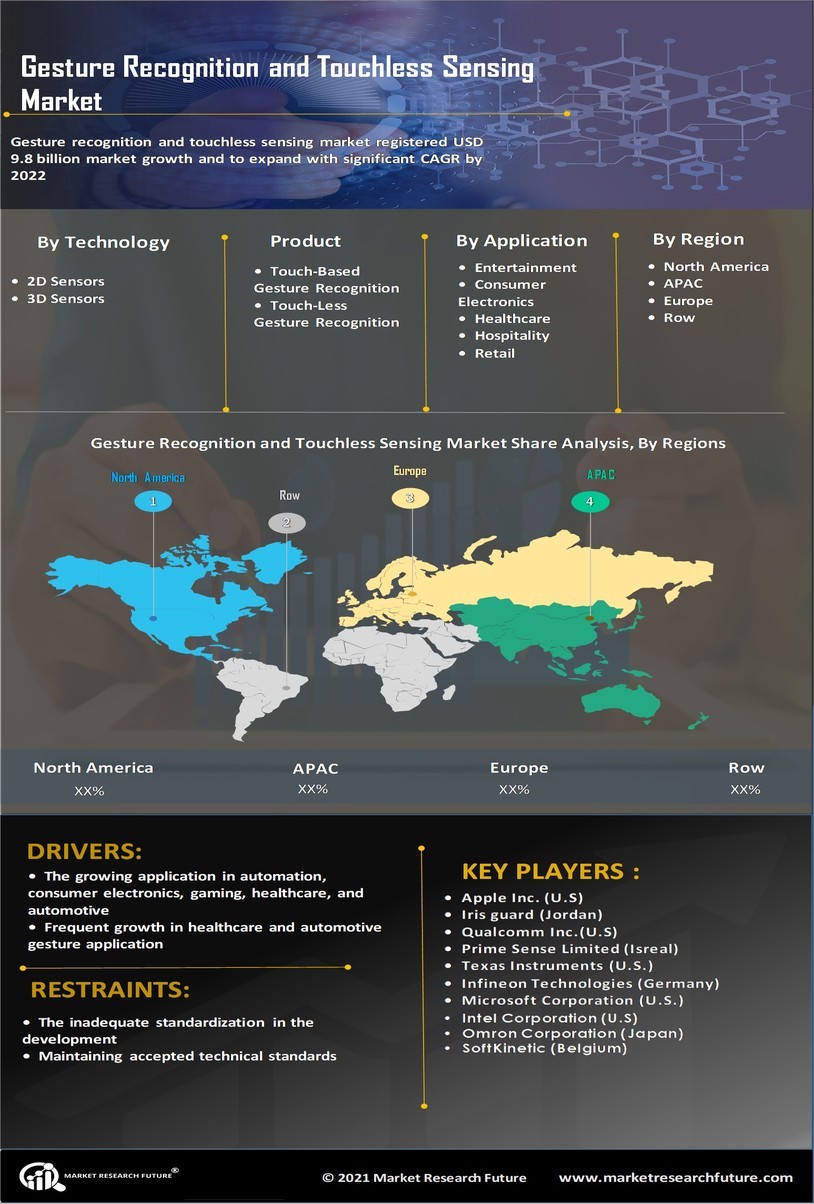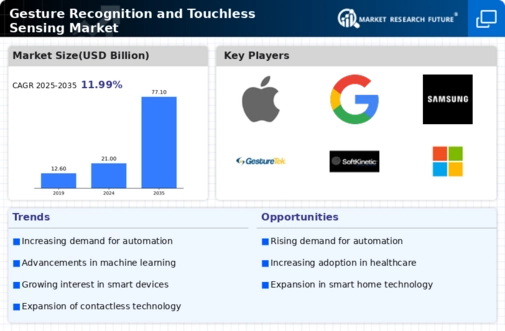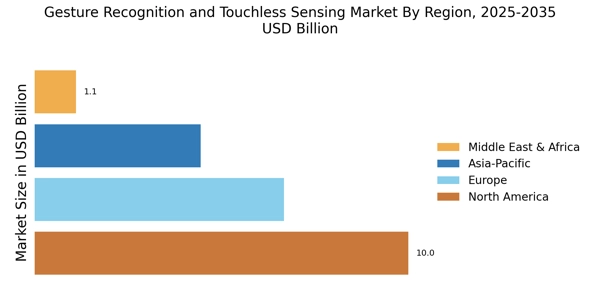Rise of Smart Home Devices
The Gesture Recognition and Touchless Sensing Market is significantly influenced by the rise of smart home devices. As consumers increasingly seek convenience and automation, gesture recognition technologies are being integrated into home appliances, lighting systems, and security devices. This integration allows users to control their environments through simple hand gestures, enhancing user experience and accessibility. Market analysis indicates that the smart home segment is expected to grow substantially, with a projected increase of around 25% in the next few years. This trend highlights the potential for gesture recognition to redefine how individuals interact with their living spaces.
Growing Adoption in Healthcare
The Gesture Recognition and Touchless Sensing Market is witnessing a notable increase in adoption within the healthcare sector. Touchless sensing technologies are being utilized to minimize physical contact, thereby reducing the risk of infection in clinical environments. Hospitals are increasingly implementing gesture recognition systems for patient monitoring and interaction with medical devices. Recent statistics suggest that the healthcare segment is expected to account for a significant share of the market, with projections indicating a growth rate of approximately 15% annually. This trend underscores the potential of touchless solutions to enhance patient care and operational efficiency in healthcare settings.
Advancements in Sensor Technology
The Gesture Recognition and Touchless Sensing Market is experiencing a surge in advancements in sensor technology. Innovations in infrared, ultrasonic, and capacitive sensors are enhancing the accuracy and responsiveness of gesture recognition systems. For instance, the integration of high-resolution sensors allows for more precise detection of hand movements, which is crucial for applications in consumer electronics and automotive sectors. According to recent data, the market for touchless sensing technologies is projected to grow at a compound annual growth rate of over 20% in the next five years. This growth is indicative of the increasing reliance on sophisticated sensor technologies to facilitate seamless user interactions across various platforms.
Increased Focus on User Experience
The Gesture Recognition and Touchless Sensing Market is driven by an increased focus on enhancing user experience across various applications. Companies are recognizing the importance of intuitive interfaces that allow users to interact with devices without physical contact. This shift is particularly evident in consumer electronics, where manufacturers are investing in touchless technologies to create more engaging and user-friendly products. Data suggests that the demand for devices featuring gesture recognition capabilities is on the rise, with expectations of a market expansion of approximately 18% over the next few years. This emphasis on user experience is likely to propel further innovations in the industry.
Expansion in Retail and Hospitality
The Gesture Recognition and Touchless Sensing Market is expanding rapidly within the retail and hospitality sectors. Businesses are increasingly adopting touchless solutions to enhance customer engagement and streamline operations. For example, gesture recognition systems are being implemented in kiosks and interactive displays, allowing customers to browse products and services without physical interaction. Recent Market Research Future indicate that the retail segment is projected to grow at a rate of around 22% in the coming years. This growth reflects the industry's commitment to leveraging technology to improve customer experiences and operational efficiency.

















Leave a Comment